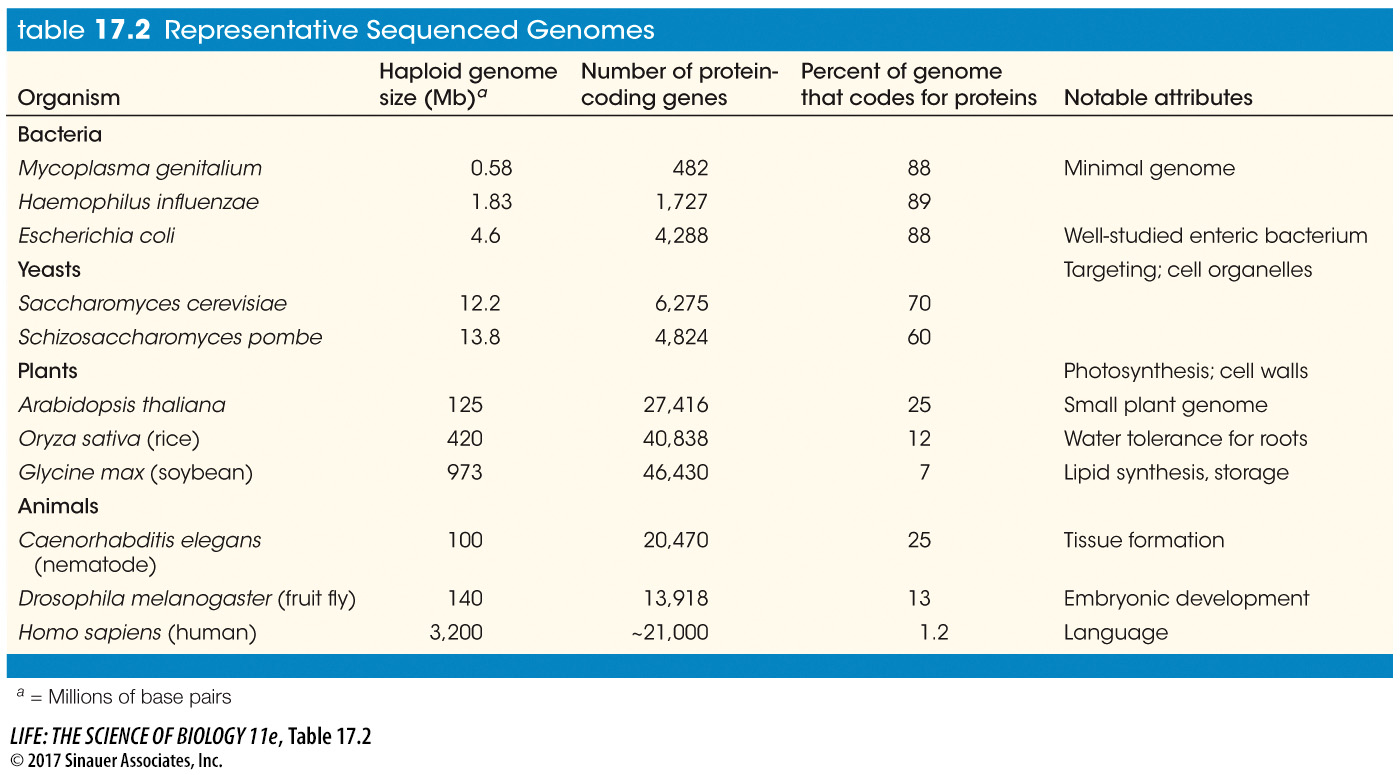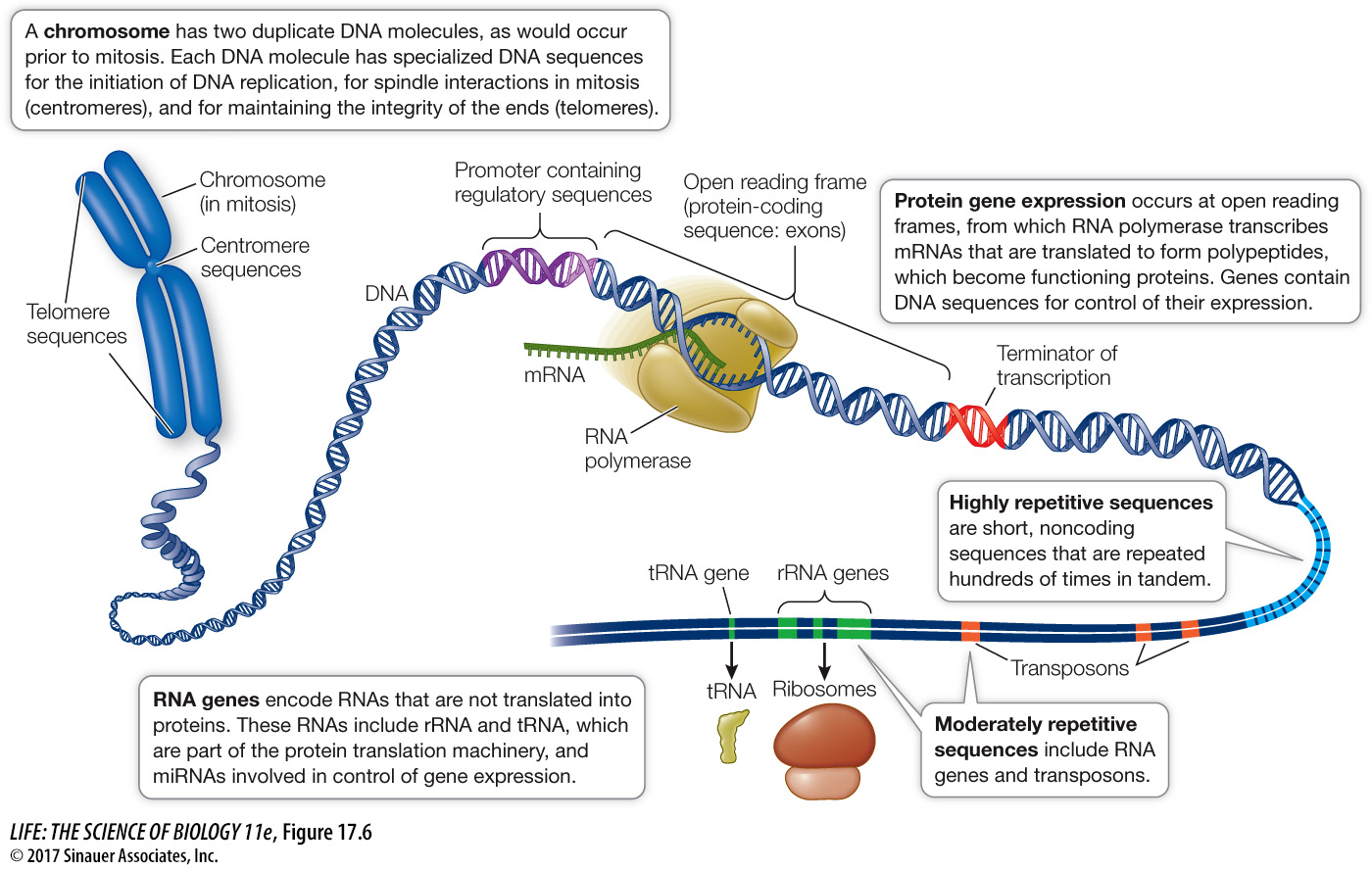key concept
17.3
Eukaryotic Genomes Contain Many Types of Sequences
key concept
17.3
Eukaryotic Genomes Contain Many Types of Sequences
Eukaryotic and prokaryotic genomes differ in significant ways. Consider, for example, how the bacterial genomes in Table 17.2 compare with those of yeasts, plants, and animals—
Eukaryotic genomes are larger than those of prokaryotes, and they have more protein-
coding genes. This difference is not surprising given that multicellular organisms have many cell types with specialized functions. As we saw above, the simple prokaryote Mycoplasma has several hundred protein- coding genes in a genome of 0.58 million bp. A rice plant, in contrast, has almost 55,986 genes! Eukaryotic genomes have more regulatory sequences—and encode many more regulatory proteins—
than prokaryotic genomes. The greater complexity of eukaryotes requires much more regulation, which is evident in the many points of control associated with the expression of eukaryotic genes (see Figure 16.7). Much of eukaryotic DNA is noncoding. Distributed throughout many eukaryotic genomes are various kinds of DNA sequences that are not transcribed into mRNA, most notably introns and gene control sequences. As we discussed in Chapter 16, some noncoding sequences are transcribed into microRNAs. In addition, eukaryotic genomes contain various kinds of repeated sequences. Prokaryotes, in contrast, seldom contain long noncoding and repeated sequences.
Eukaryotes have multiple chromosomes, whereas prokaryotes usually have a single, circular chromosome. As we have described in previous chapters, eukaryotic chromosomes have multiple origins of replication, a centromere region that holds the replicated chromosomes together before mitosis, and a telomeric sequence at each end of the chromosome that maintains chromosome integrity (Focus: Key Figure 17.6).

focus: key figure

Q: Does increasing genome size necessarily mean that there are more protein-
No. Protein-
focus your learning
Nematodes are useful model organisms for studying eukaryotic development.
Arabidopsis is an important plant model.
Gene families result from gene duplications and evolutionary divergence.
Some moderately repetitive sequences are transcribed but others are not.